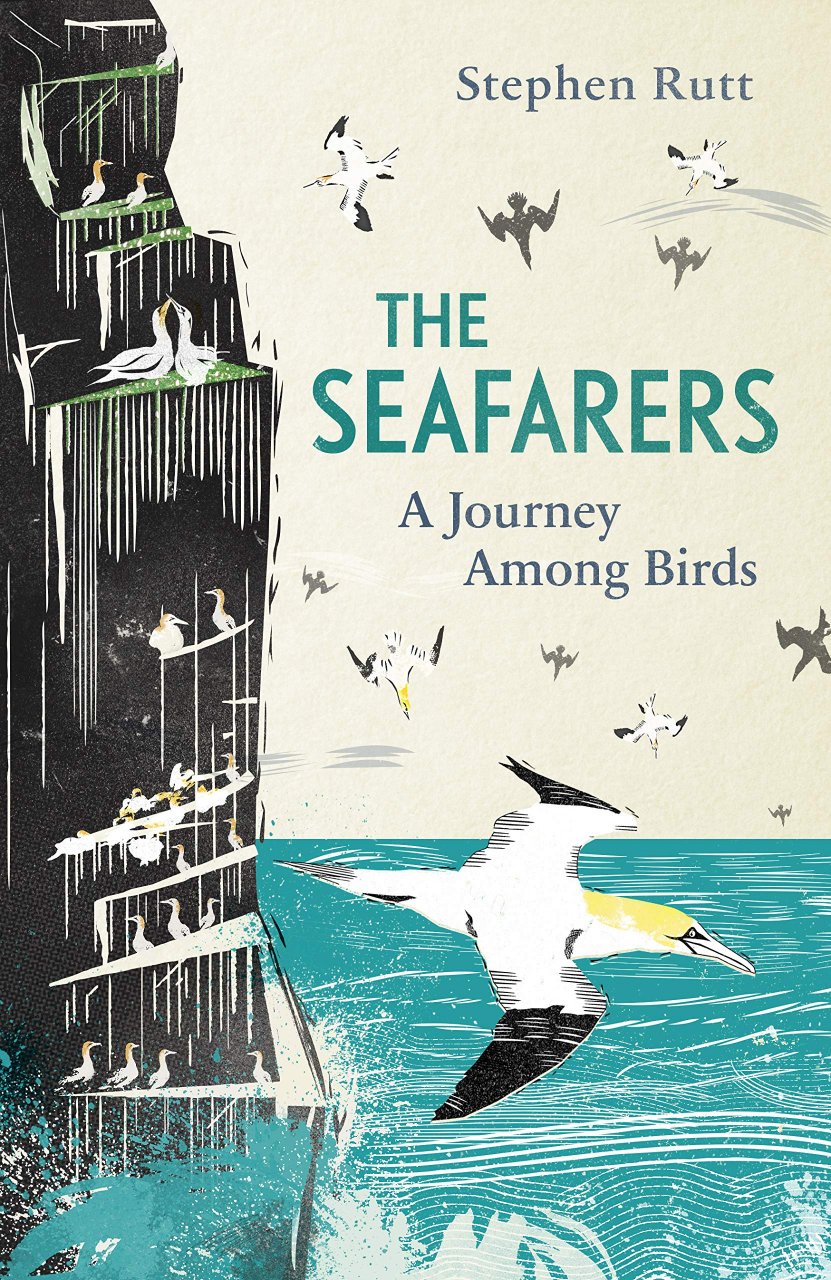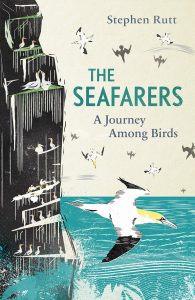In this moving and lyrical account, Stephen Rutt travels to the farthest  corners of the UK to explore the part seabirds have played in our story and what they continue to mean to Britain today. From Storm Petrels on Mousa to gulls in Newcastle and gannets in Orkney, The Seafarers takes readers into breath-taking landscapes, sights, smells and sounds, bringing these vibrant birds and their habitats to life.
corners of the UK to explore the part seabirds have played in our story and what they continue to mean to Britain today. From Storm Petrels on Mousa to gulls in Newcastle and gannets in Orkney, The Seafarers takes readers into breath-taking landscapes, sights, smells and sounds, bringing these vibrant birds and their habitats to life.
 To get to know Stephen Rutt and his new book, we asked him a few questions on his inspiration, advice and some interesting facts he’s discovered on his journey while writing The Seafarers.
To get to know Stephen Rutt and his new book, we asked him a few questions on his inspiration, advice and some interesting facts he’s discovered on his journey while writing The Seafarers.
- Can you tell us a little about your background and how you got interested in seabirds?
I’ve been birding since I was 14. I grew up with two dominant interests: birds and books. Circumstances funnelled me towards studying literature and after university I was unhappily living in London with a job I didn’t enjoy. When I was 22 I saw an opportunity to get out, by volunteering at the bird observatory on North Ronaldsay, the northernmost of the Orkney islands. I was expecting to fall in love with migratory birds, but found myself in one of the slowest, least-exciting springs for them. That focused my attention instead on the unfamiliar terns, the tysties (black guillemots) and fulmars. I fell in love with seabirds there. The Seafarers is my love letter to them.
2. If anyone wanted to observe or study seabirds themselves, what would be your advice to getting started.
Britain is brilliant for seabirds. Even if you can’t get to the coastline, there are kittiwakes – a proper sea-going gull – nesting in Newcastle city centre, and terns migrating overland. If you can get to the coast then there will be a colony of something not too far away, whether it is terns or fulmars or gannets or auks. Find a place and a species that suits you and spend some time watching – it’s a heady, hypnotic, fun thing to do. Some books will help. The Collins Bird Guide is a great field guide to help you work out what you’re looking at, particularly with the tricky common/Arctic tern, and a book like Shearwaters by R. M. Lockley will guide you through the thought processes and the joy of observation. If anyone reads The Seafarers and is inspired to go birding or seek out a seabird, I will consider it a success.
3. Seabirds face many threats to their survival; in your opinion, what is the number one threat they face?
Climate change. Plastic pollution is an obvious and alarming threat, but I fear it is easy to be distracted by a problem that’s much more visible, emotionally involving, and straightforward for individuals to have an effect on. Global warming threatens everything: not just the birds but the eco-systems they live in. It is not an original thing to say, but it is the number one threat with which we live. Problems are amplified by apathy. I wrote the book to bring the sight, the sound, and the smell of the species and landscape to the reader. I want people to fall in love with seabirds like I did.
4. Each chapter tends to focus on a different seabird; are you able to say which bird had the most profound effect on you?
Fulmars. I had been travelling the best part of 24 hours by public transport (two trains, four buses), when I finally got the ferry across to St Margaret’s Hope on the Orkney archipelago. It was blowing a gale and I was worried about the flight to North Ronaldsay being cancelled, stranding me in an unfamiliar place. I stood on the deck anyway, clinging to the handrail, fulmars carving up the breeze, turning it into their plaything. Their ability at flying elegantly in the strongest winds is exceptional. The wind continued for my first few days on North Ronaldsay. Fulmars were everywhere. At times they were close enough that it felt like I could reach out and touch them (though obviously I didn’t!). That was glorious. They were my welcome committee and they made the transition feel like absolutely the right thing to do.
5. While writing your book and observing seabirds; was there one surprising fact or discovery that you didn’t know previously that you’d like to tell us about?
I learned so much while researching the book, both how astonishing seabirds are and the distressing effects we are having on them. But let’s be optimistic! One of my favourite discoveries was in relation to the Arctic tern that were GPS tagged on Northumberland’s Farne Islands. It took the birds just a month to migrate to the sea off the coast of South Africa’s Cape of Good Hope. It took them just a month to return from there in spring, as well. The speed and the distance they are capable of is just incredible.
6. What are your hopes for the future of seabirds?
That they have one – which is depressing but true. Beyond that, I hope that we can take their conservation seriously, and that they can thrive as we continue into the Anthropocene, and a future of plastic pollution and global warming.
7. Do you have any new projects in the pipeline that you’d like to tell us about?
I do! I have just finished my second book. It’s about geese, winter, and the twin pull of Scotland and East Anglia and should be published this autumn by Elliott & Thompson. In the meantime, I’m looking forward to going birding again.
The Searfarers: A Journey Among Birds
Hardback | May 2019| £14.99
Takes readers into breath-taking landscapes, sights, smells and sounds, bringing these vibrant birds and their habitats to life.
You can discover more about the lives of seabirds, shorebirds and wildfowl by browsing our complete selection.


